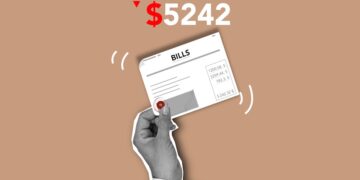Smart Budgeting Strategies: How to Reduce Monthly Expenses
In the quest for financial stability, mastering the art of budgeting is essential. Reducing monthly expenses is a common goal for many individuals seeking to enhance their financial health. This comprehensive guide offers strategic insights into smart budgeting to help you decrease spending, save money, and optimize your financial wellbeing.
Understanding Your Current Financial Situation
Before you can effectively slash your monthly expenses, it’s crucial to have a clear understanding of where your money is going. This involves tracking all your expenditures, large and small, to gain a thorough picture of your financial habits.
Action Step: Begin by reviewing your bank statements and receipts from the last three months. Categorize each expense to see where you can potentially cut back. Tools like budgeting apps or spreadsheet templates can be extremely helpful in this process.
Key Areas to Cut Costs
1. Housing Expenses
Housing is typically the largest monthly expense. Consider refinancing your mortgage to take advantage of lower interest rates, or explore the possibility of downsizing to a smaller home if your current space exceeds your needs. Renters could negotiate lease terms or look for cheaper accommodations.
2. Utility Bills
Simple changes can significantly reduce utility bills. Install energy-efficient LED lights, unplug electronics when not in use, and ensure your home is well-insulated to cut heating costs. Additionally, compare providers for competitive rates, or consider usage-based plans.
3. Transportation Costs
Transportation can also eat up a considerable part of your budget. If possible, use public transportation, carpool, or bike to work. Regular car maintenance and comparing insurance providers for better rates can also decrease transportation expenses significantly.
4. Grocery Bills
Food expenses are necessary but variable. To save on groceries, plan your meals, stick to a shopping list, and avoid impulse buys. Take advantage of discounts and loyalty programs, and consider buying store brands instead of name brands.
5. Subscription Services
Review all your subscription services, including streaming platforms, magazines, and gym memberships. Cancel those you don’t use frequently and look for free or cheaper alternatives. Bundling services can also offer savings.
Debt Management and Reduction
Debt payments can be a significant monthly burden. To manage and reduce your debt, prioritize high-interest debts like credit card balances. Consider transferring balances to a card with a lower interest rate or a 0% introductory rate.
Action Step: Consolidate debts through a personal loan with a lower interest rate. This not only simplifies your finances by gathering multiple debts into one but can also lower your total monthly payments.
Creating and Sticking to a Budget
Once you’ve identified areas to cut costs, the next step is to establish a realistic budget.
Action Step: Use the 50/30/20 rule to allocate your income—50% towards needs, 30% towards wants, and 20% towards savings and debt repayment. Regularly review and adjust your budget to reflect any changes in your financial situation or goals.
Combat Impulse Spending
Impulse purchases can derail even the best budget plans. To combat this, wait 24-48 hours before making non-essential purchases. Often, the desire to buy something fades after some time. Additionally, unsubscribe from marketing emails and avoid browsing online stores.
Investing in Quality and Sustainability
While it might seem counterintuitive to spend more upfront, investing in high-quality, durable products can save money in the long run. This is particularly true for clothing, electronics, and appliances. Cheaper items often wear out quickly and need replacing more frequently.
Embracing a Minimalist Lifestyle
Adopting a minimalist approach to personal possessions can lead to substantial savings. Evaluate what you truly need, sell or donate unused items, and resist the urge to replace them unless necessary. This not only declutters your space but also your budget.
Utilizing Technology and Resources
Take advantage of technology to track expenses, compare prices, and find deals. Apps and websites like Mint, YNAB (You Need A Budget), and Honey can automate much of the budgeting process and ensure you get the best prices on purchases.
Conclusion: Smart Budgeting for Financial Freedom
Reducing your monthly expenses is a powerful strategy toward achieving greater financial freedom. By understanding and managing your spending, you can optimize your budget to better align with your financial goals. Remember, the key is consistency and willingness to adapt your strategies as your life and the economy change.
Incorporating these smart budgeting strategies will not only streamline your finances but also reduce financial stress and build a more secure future.

























































